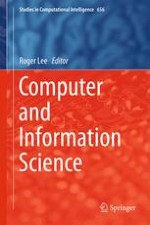2016 | Buch
Über dieses Buch
This edited book presents scientific results of the 15th IEEE/ACIS International Conference on Computer and Information Science (ICIS 2016) which was held on June 26– 29 in Okayama, Japan. The aim of this conference was to bring together researchers and scientists, businessmen and entrepreneurs, teachers, engineers, computer users, and students to discuss the numerous fields of computer science and to share their experiences and exchange new ideas and information in a meaningful way. Research results about all aspects (theory, applications and tools) of computer and information science, and to discuss the practical challenges encountered along the way and the solutions adopted to solve them.
The conference organizers selected the best papers from those papers accepted for presentation at the conference. The papers were chosen based on review scores submitted by members of the program committee, and underwent further rigorous rounds of review. This publication captures 12 of the conference’s most promising papers, and we impatiently await the important contributions that we know these authors will bring to the field of computer and information science.
Anzeige
